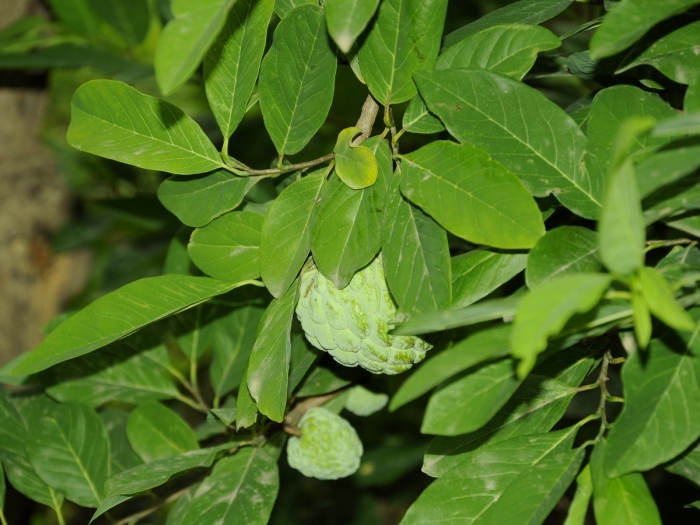Sugar-Apple
(Annona squamosa)
Sugar-Apple (Annona squamosa)
/
/

Subhadra Devi
CC BY 4.0
























































Estimated Native Range
Summary
The Sugar-apple is valued for its delicious fruit, which is eaten fresh or used in desserts and beverages. It is a prolific bearer, with a five-year-old tree capable of producing up to 50 fruits. The tree is often grown in tropical home gardens and orchards. It is also used in traditional medicine and has various health benefits due to its vitamin and mineral content. In cultivation, it prefers full sun and well-drained soils, tolerating a range of soil types. While it is moderately drought-tolerant, it performs best with regular watering and does not tolerate frost. It can be propagated by seeds, which germinate easily, but improved cultivars are often grafted. Potential problems include pests like the Annona seed borer and diseases such as root rot.CC BY-SA 4.0
Plant Description
- Plant Type: Tree, Shrub
- Height: 10-15 feet
- Width: 10-15 feet
- Growth Rate: Slow
- Flower Color: N/A
- Flowering Season: Spring
- Leaf Retention: Evergreen
Growth Requirements
- Sun: Full Sun
- Water: Low, Medium
- Drainage: Fast, Medium
Common Uses
Butterfly Garden, Drought Tolerant, Edible*Disclaimer: Easyscape's listed plant edibility is for informational use. Always verify the safety and proper identification of any plant before consumption., Fragrant, Low Maintenance, Salt Tolerant
Natural Habitat
Native to tropical Americas and West Indies, often found in disturbed areas, home gardens, and farmlands
Other Names
Common Names: Sweetsop, Bullock’s Heart, Custard Apple, Sweetsop, Pond Apple, Sweet Sop, Buah Nona, Seri Kaya, Anona, Nona
Scientific Names: , Annona squamosa, Xylopia glabra, Annona cinerea, Annona asiatica, Xylopia frutescens, Annona forskahlii, Annona distincta, Annona forsskalii, Guanabanus squamosus
GBIF Accepted Name: Annona squamosa L.